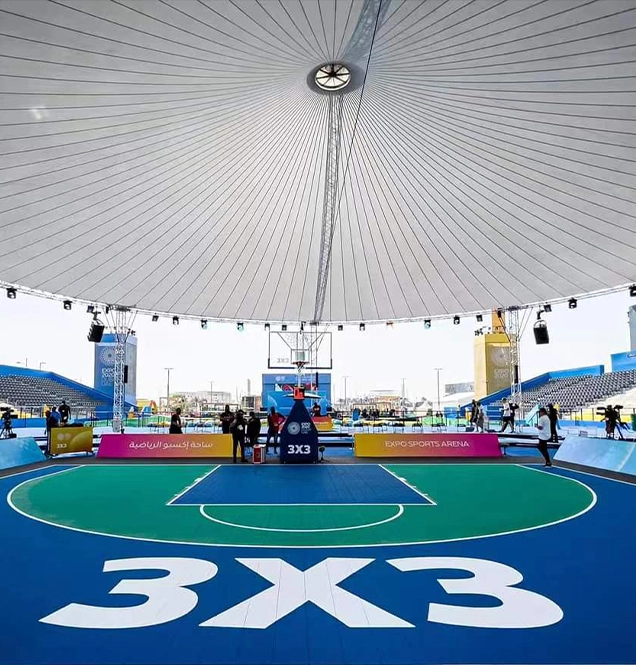Dis . 04, 2024 16:07 Back to list
rubber running track
The Importance of Rubber Running Tracks in Modern Athletics
In recent years, the significance of rubber running tracks has gained prominence within the realm of athletics. As a crucial infrastructure for both amateur and professional sports, rubber tracks are transforming the way athletes train and compete. This article delves into the benefits, construction, and future of rubber running tracks.
The Benefits of Rubber Running Tracks
One of the most compelling advantages of rubber running tracks is the safety they offer. Unlike traditional, hard surfaces such as asphalt or concrete, rubber tracks are designed to reduce the risk of injury. The shock-absorbing nature of rubber minimizes the impact on athletes' joints, helping to prevent common injuries like shin splints, knee pain, and stress fractures. This resilience allows athletes to train more effectively, without the constant fear of injury that can stem from repetitive stress.
Moreover, rubber running tracks provide superior traction. Athletes can achieve better grip and acceleration, allowing for faster sprinting times and improved overall performance. This is particularly important in competitive environments where even fractions of a second can determine the outcome of a race. The consistent surface of rubber tracks also means that athletes face fewer surprises during their runs, leading to better focus and performance.
Additionally, rubber running tracks are remarkably weather-resistant. Rain or shine, these tracks maintain their functionality and safety, allowing athletes to train year-round without the disruptions associated with natural grass surfaces or even gravel tracks, which can become muddy and unsafe. This durability is especially beneficial for schools and universities looking to provide reliable athletic facilities for their students.
Construction and Sustainability
rubber running track

The construction of rubber running tracks is as integral to their effectiveness as their benefits. Typically composed of recycled tires, granulated rubber, and a polyurethane binder, the environmentally friendly nature of these tracks cannot be overlooked. By repurposing old tires, manufacturers contribute to sustainability efforts while providing a safe and efficient training surface.
A well-constructed rubber track consists of various layers that enhance its performance. The top layer, often made of EPDM (Ethylene Propylene Diene Monomer), provides excellent weather resistance and color retention, making tracks visually appealing. Beneath this colorful surface lies a cushioned layer that absorbs shock and protects athletes. Finally, a stable base layer ensures proper drainage, preventing water accumulation and maintaining vital safety standards.
Future Trends in Rubber Track Technology
As the realm of technology continues to evolve, so too does the potential for advancements in rubber track design. Innovations in materials science may lead to even more sustainable and efficient options that further enhance athlete performance. Emerging trends include the use of smart technology embedded within the track surfaces. For example, sensors could be installed to analyze performance metrics in real-time, providing athletes and coaches with valuable data to improve training regimens.
Moreover, the customizability of rubber tracks is increasing. The ability to design tracks tailored to specific sports, such as long-distance running, sprints, or even team sports like soccer, is becoming more common. This adaptability enhances the usability of athletic facilities while ensuring that each sport has a surface that caters to its unique requirements.
Conclusion
In conclusion, rubber running tracks are more than just a surface for athletes to run on; they represent a significant leap forward in the pursuit of athletic excellence. With their capacity to minimize injury risk, provide optimal traction, and withstand various weather conditions, they stand as a preferred choice for schools, training facilities, and competitions alike. As we look towards the future, the integration of technology and a continued focus on sustainability and performance will ensure that rubber running tracks remain at the forefront of modern athletics. Embracing these advancements will not only benefit athletes today but will inspire the next generation to push the limits of human performance on safe and efficient surfaces.
-
Sport Court Tiles with AI Innovation | Durable & Safe
NewsAug.01,2025
-
Vinyl Carpet Flooring | Durable & Waterproof Design
NewsJul.31,2025
-
Premium Basketball Board Stand with GPT-4-Turbo AI
NewsJul.31,2025
-
Premium Maple Flooring for Gyms & Homes | PVC & Vinyl Options
NewsJul.30,2025
-
Premium Outdoor Basketball Court Tiles for All Weather Use
NewsJul.30,2025
-
Durable Basketball Board Stand for Indoor & Outdoor Use
NewsJul.29,2025

